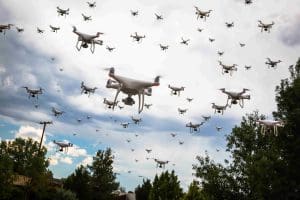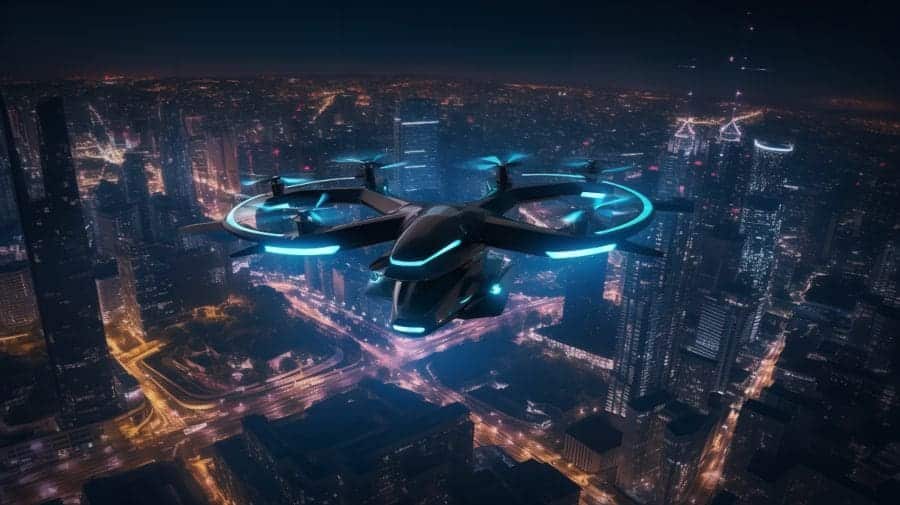As we soar into a new era of technological innovation, drones are rapidly becoming a significant part of our everyday lives. From aerial photography to package delivery and from environmental monitoring to emergency response, drones are revolutionizing numerous industries. This blog explores the latest trends in drones and drone technologies, their applications, and the markets they impact.
Advanced AI and Machine Learning
Artificial Intelligence (AI) and Machine Learning (ML) are at the forefront of drone technology advancements. Companies like Skydio are leading the way in this area with drones that can navigate complex environments autonomously using AI. Maris-Tech offers innovative Edge AI accelerated video solutions designed to integrate with autonomous and semi-autonomous platforms for a wide range of applications, such as surveillance and defense. These drones can learn from their environment, adapt to changes, and make decisions autonomously, making them particularly useful in tasks such as surveying, where drones can identify patterns and anomalies faster and more accurately than humans. The market for AI in drones is expected to grow significantly, impacting sectors like agriculture, construction, and security. According to a report by MarketsandMarkets, the market size for drones with AI is expected to grow from $2.1 billion in 2022 to $6.5 billion by 2027.
Increased Task-Based Autonomy
The trend towards increased autonomy in drone technology is gaining momentum. Companies like DJI are developing drones that can perform complex tasks without human intervention, such as detecting leaks, inspecting pipelines, and even charging themselves. This increased autonomy is expected to boost efficiency and productivity in various sectors, including agriculture, construction, and logistics. For example, autonomous drones can be used for precision agriculture, where they can monitor crop health, apply fertilizers, and even harvest crops. The enormous commercial potential is why the global precision agriculture market size is expected to reach $19.24 billion by 2030.
Drone Swarming using Edge Video Intelligence solutions
Drone swarming, the coordinated operation of multiple drones, is another emerging trend. Each drone in a swarm operates autonomously yet in harmony with the others, allowing the swarm to cover larger areas and perform tasks more efficiently than a single drone. Companies like Verity Studios are pioneering this technology, using it to create stunning light shows at live events. However, the potential applications of drone swarming extend far beyond entertainment. For example, in search and rescue operations, a swarm of drones can cover a large area to search for signs of life, allowing rescue teams to locate and reach victims more quickly. This technology could prove invaluable in the aftermath of natural disasters, where time is of the essence.

Enhanced Connectivity
With the advent of 5G technology, drones can now operate with increased speed, reduced latency, and improved reliability. This enhanced connectivity is a game-changer for drones, opening up many new possibilities for their use. Companies like Qualcomm are developing drone platforms that leverage 5G connectivity for real-time data transmission and remote control of drones. These platforms allow for seamless communication between the drone and the operator, enabling the operator to control the drone from a distance and receive real-time feedback.
This enhanced connectivity opens up new possibilities for their use in industries such as healthcare, where every second counts. Drones equipped with 5G technology can deliver medical supplies, such as vaccines, medications, or even organs for transplant, to remote or hard-to-reach areas in a fraction of the time it would take for traditional delivery methods. In some cases, drones could even transport patients, providing a rapid response in critical situations.
Green Drones
As sustainability becomes a global priority, the development of eco-friendly drones is on the rise. These drones are designed to minimize their environmental footprint, using renewable energy sources and biodegradable materials. Some drones are being designed to run on solar power, with solar panels installed on their wings to harness the sun’s energy. This allows the drones to operate for extended periods without recharging. Other drones are being developed to run on biofuels, which are derived from organic materials and are a more sustainable alternative to fossil fuels. Some companies are exploring the use of biodegradable materials in the construction of drones. This means that when the drone reaches the end of its life, it can decompose naturally without contributing to landfill waste.
Companies like Dendra Systems (formerly BioCarbon Engineering) are leading the way in the use of green drones. They are using drones to plant trees and rehabilitate ecosystems, demonstrating the potential of drones to contribute to environmental sustainability. The drones are used to plant seeds in precise locations, making reforestation more efficient and effective. The market for green drones is expected to grow as more industries seek sustainable solutions.
The Sky’s the Limit: Exploring the Future of Drones
The world of drones is evolving rapidly, with new trends and technologies emerging regularly. These advancements are opening up new applications and markets, from agriculture and construction to healthcare and entertainment. As we continue to explore the potential of these versatile machines, it’s clear that drones will play an increasingly important role in our future. Whether it’s through improving efficiency, enhancing safety, or promoting sustainability, drones are set to transform our lives in countless ways.
Maris Tech will showcase its intelligent video transmission technology at the Commercial UAV Expos in Las Vegas on September 5-7, 2023. Visit us at Booth 941 or schedule a demo

